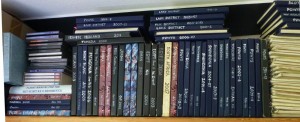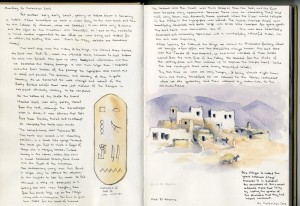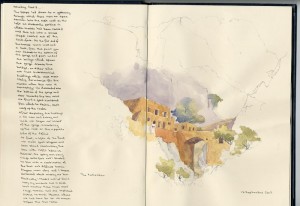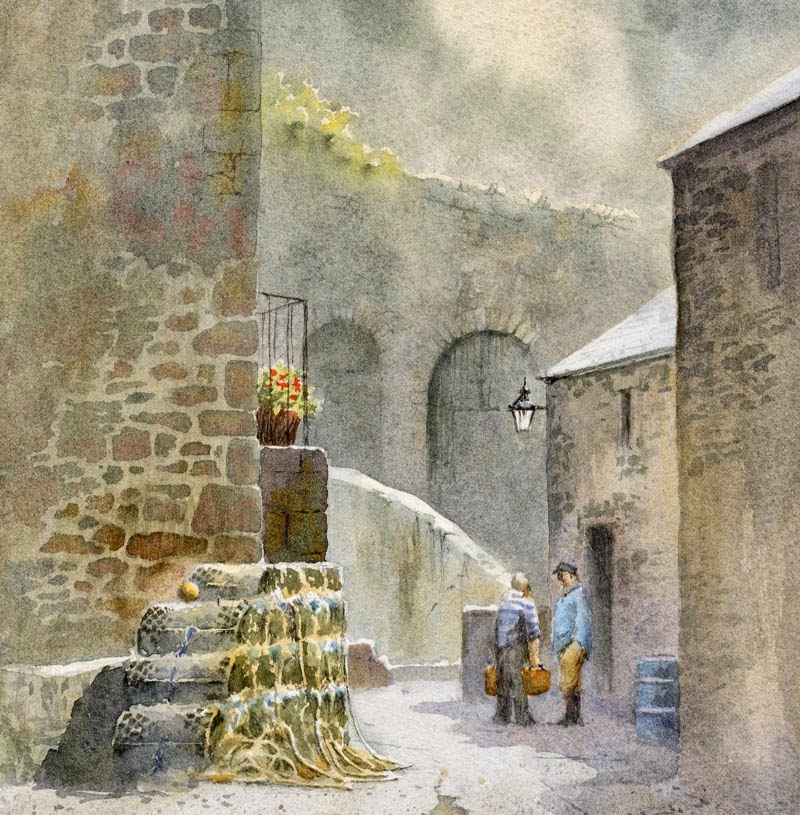
Here is just a fraction of David’s many sketchbooks
I recently had an email inquiring about which sketchbooks I recommend. I thought other artists would find this useful too, so I am sharing this information here.
David and I both have a large collections of sketchbooks, The UK ones are dedicated to certain counties, or regions such as Mid Wales, Lake District, Yorkshire etc. and the overseas ones are illustrated daily journals of the trip, with text and drawings and paintings.

A page from my Egypt sketchbook
We have used a number of different brands over the years, some of which are no longer available but the ones we currently use are Daler Rowney Ebony Hardback Sketchbooks in either A5 or A4 sizes. Many of the UK ones and all of the overseas ones are in casebound hardback sketchbooks with cartridge paper, either A4 or A5. Casebound books are more durable than ring bound ones and have the advantage that you can write on the spine and then organise them on a bookshelf.

A page from my Crete sketchbook




